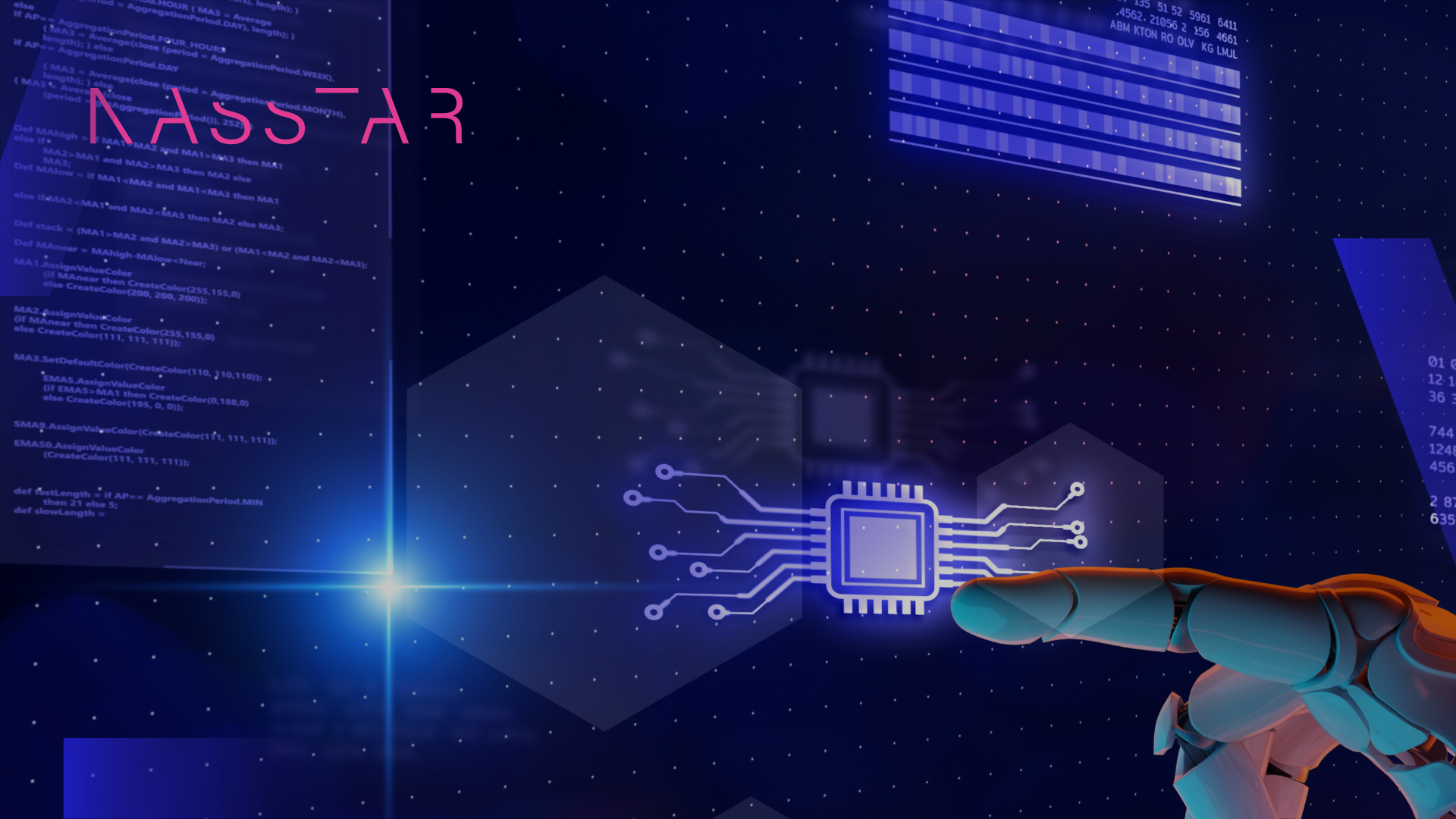Navigating AI & Change Management: How to Embrace Digital Transformation

This blog has been expertly reviewed by Ross Welham, Solutions Architect at Nasstar.
Artificial Intelligence (AI) is set to revolutionise the workplace and how we do business. In many organisations, it’s already being used to improve processes, enhance productivity, and create a working environment miles ahead of the competition.
According to a Forbes survey, the most popular AI application for businesses is improving the customer experience, with 56% respondents stating this is what they are using the technology for. This is closely followed by cyber security and personal assistance.
However, as more businesses start to adopt AI technologies within their workplace, there becomes a greater need for change management. While technology itself can transform your business in many ways, it’s people that make the real change. So how do you ensure your people are on board with this change? And how can you support, encourage, and empower them to leverage AI in their everyday activities?
Here, we’ll discuss the importance of change management when carrying out an artificial intelligence transition to ensure your transformation gets off to a good start – with people at the forefront.
What is AI Change Management?
AI change management refers to the process of effectively managing the organisational changes that come as a result of adopting, integrating, and implementing AI in the workplace.
Ross Welham, Solutions Architect at Nasstar, said: “Change management in relation to a new AI solution will involve guiding employees and teams through any transitions associated with your AI initiatives. This is vital for ensuring a smooth adoption and maximising the benefits of AI while minimising any disruptions.
“Whether it’s AI for data analysis, content creation or strategic planning, your business will need to heavily consider change management as an integral part of the journey.”
Benefits of change management for AI adoption
Although AI is exciting and can supercharge many aspects of your business, rushing into an AI solution without a change management plan can be detrimental. At Nasstar, we understand the importance of artificial intelligence change management and how this can positively impact a business. But for those who are unsure, here are the key benefits of change management in AI adoption.
Smooth transition
Using change management to effectively plan for your new implementation of AI technology can ensure a smooth transition by helping employees understand the need for change and reducing resistance to that change.
Greater adoption
With an effective change management strategy, you can increase the adoption and acceptance of your new AI technology across your workforce. By addressing concerns, providing training, and promoting open communication, change management strategies encourage employees to embrace new solutions and, more importantly, understand how to incorporate them effectively into their work.
Enhanced employee engagement
By using change management to involve employees in the decision-making process throughout the AI adoption journey, you can foster greater employee engagement. Engaged employees are more likely to support and actively participate in your new AI initiative.
Improved performance
Planning a change management strategy means you can align new AI technologies to your business goals and objectives, enabling you to realise the full potential of your new implementation. With clear, defined objectives and success criteria, change management ensures your AI initiative will contribute to improved performance and operational efficiency.
Reduced resistance
Like any new technology, AI adoption often results in resistance from employees who fear change, apprehension or job displacement. Change management addresses these concerns by ensuring your employees develop the appropriate skills through education and training to reduce resistance and help ensure a smoother transition.
Improved communication
Change management promotes effective communication throughout the lifecycle of AI adoption, ensuring stakeholders and employees are informed about the purpose, benefits, and implications of the new technologies. This helps to foster trust, transparency, and collaboration across the business.
Risk mitigation
Change management involves identifying potential challenges and helps to address them proactively, while also implementing contingency plans. This helps to mitigate any risks associated with AI adoption, minimising disruptions, and ensuring a successful implementation.
Competitive advantage
When adopting AI technology, effective change management can ensure your organisation gains a competitive advantage in the marketplace through alignment with business objectives and making sure the technology is implemented effectively.
Change Management Strategies for Implementing AI
When implementing AI in your business, you’ll need to consider various change management strategies to ensure a smooth transition that helps you maximise adoption to unlock the benefits of your AI integration. Here are some of the key AI adoption strategies and steps you need to think about when adopting AI technology:
Develop a clear vision
Firstly, you’ll need to define a clear vision and strategy for AI adoption. This should align closely with your business goals and objectives, and should be communicated to employees early on to ensure alignment and buy-in. This common awareness is foundational for the success of subsequent change and adoption activities.
Engage stakeholders
From employees to managers and customers to partners, you need to engage stakeholders at all levels of your organisation. Involve them in the decision-making process, solicit feedback, and address concerns early on to help foster ownership and support for your AI initiatives.
Provide education and training
To ensure your employees have the skills and knowledge to use your new AI tools effectively, you need to offer comprehensive education and training programmes. These could comprise hands-on training and workshops, and online resources to support the continuous learning and development necessary to keep pace with evolving AI capabilities.
Communicate effectively
Communication is key when it comes to AI implementation. You should communicate transparently and consistently about the adoption, tailoring messages to address the needs and concerns of different stakeholders. You should also ensure open dialogue and collaboration is welcomed and encouraged across the business.
Develop a plan
As part of your overall change management strategy for AI implementation, you need to create a plan that clearly outlines the objectives, milestones, tasks, and responsibilities for the AI adoption. You should establish clear timelines and metrics for progress tracking, ensuring accountability throughout the entire change process. AI adoption is not a “once and done” exercise, therefore your plan should be extensible and adaptable to AI as an ever-evolving technology.
Address resistance
AI implementation may come with some stakeholder resistance, so this should be anticipated and addressed early on. You should aim to address concerns, dispel rumours with facts, and provide support to employees throughout the process. The goal is to ensure employees feel supported and empowered to embrace change and understand the importance of their contribution to the success of your AI initiatives.
Start small
A key part of change management is testing, and you should ensure you start small with your AI implementation to test how it works. This could involve starting with small pilots or proof-of-concepts to test the technology, gathering feedback and iterating solutions based on how it is received. You can then scale up your implementation based on lessons learned and successful outcomes.
By employing these change management strategies, you can navigate the complexities of AI adoption effectively, while minimising disruptions and maximising the benefits of AI integration.
Planning for AI integration
Using a comprehensive change management strategy can be used for many different AI or technology implementations. Here are some top tips for planning an AI integration and managing technological change within your business.
- Define business objectives: Clearly define the goals you want the AI integration to achieve, highlighting areas where AI can add value. For example, improving efficiencies, enhancing the customer experience, or reducing costs.
- Carry out a technology assessment: Look at your current infrastructure, capabilities, and readiness for AI integration. You’ll need to identify any gaps or limitations that should be addressed before implementing AI solutions.
- Identify use cases: Assess specific use cases or applications where AI can be used to address business challenges or opportunities. Then, you can prioritise these use cases depending on their potential impact, feasibility, and alignment with wider business goals.
- Allocate resources: Consider budget, personnel, and time for AI integration initiatives. You’ll want to determine how much it will cost to buy the AI technology, hire skilled specialists, and account for the time commitments to deliver training and support to existing staff.
- Select AI technologies: Research and evaluate potential technologies that support your identified use cases and business goals. During the selection process, you should consider each solution’s scalability, reliability, security and how easy it is to integrate with your current tech stack.
- Develop a data strategy: Outline how your data will be collected, stored, processed, and analysed to support your AI initiatives. You should consider data quality, integrity, privacy, and security throughout the data lifecycle.
- Address ethical or regulatory considerations: As a new and emerging technology, AI comes with some additional considerations around ethics and regulations. You should consider data privacy, fairness, transparency, and bias carefully. It can also be useful to develop policies or guidelines to ensure responsible AI usage and compliance with relevant laws or regulations.
- Create a roadmap: Outline your timeline, milestones, tasks, and dependencies for AI integration. You should define your key success criteria and any performance metrics you want to use to measure progress.
- Test: Conduct tests to measure and validate how effective your AI solution is in a real-life situation. Gather feedback from stakeholders and users to identify areas for improvement and refinement before a wider rollout.
- Scale and implement: After successful testing and adaptations, you can scale up your AI initiative and roll out across your business. You should do this gradually so you can monitor performance and make further adjustments as necessary, ensuring smooth integration and adoption with minimal disruption.
- Deliver training and support: Help your employees get familiar with the new AI technologies and applications in a business context. You should offer ongoing support and training to ensure continuous learning and skill development as part of your change management plan.
- Monitor and evaluate: Establish how you will monitor and evaluate the performance of your AI solution. This could include monitoring KPIs, gathering user feedback, and driving continuous improvement by adapting your AI and change management strategies, as necessary.
No matter where you are on your AI adoption journey, change management is vital for successful implementation and integration. Speak to our team about how you can ensure you’re ‘people ready’ for organisational change with AI initiatives.
FAQs
How does AI impact traditional change management practices?
When implementing an AI solution, change management needs to adapt to reflect the impact this technology has on a business. For example, your change management strategy must consider how the tool will be used in different departments, greater resistance than with other technologies, and how AI can be used in the change management process.
How can organisations overcome resistance to AI adoption in change management?
To overcome resistance to AI in change management, businesses can ensure they involve stakeholders from the beginning of the process, creating a supportive environment that fosters collaboration and ensures stakeholders feel involved in the decision-making process.




